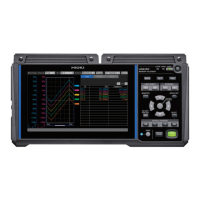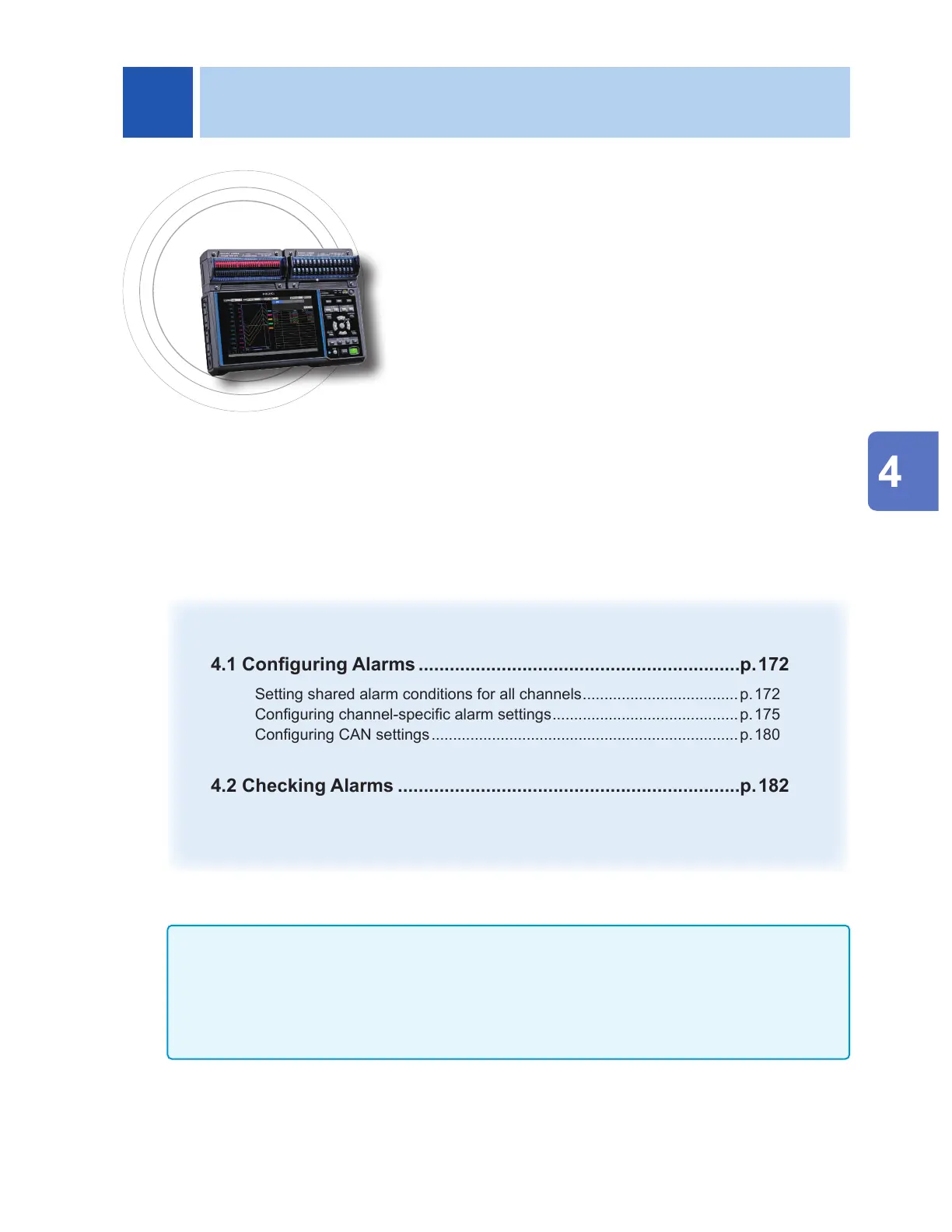171
Unit Measure Channel Trigger Alarm Calculation System
4
Alarm (Alarm Output)
This chapter describes how to set alarm conditions for each
measurement channel.
You can have the instrument sound a tone or output an alarm
signal to an external device when measurement data satises
the set condition.
For example, you can output an alarm when the recorded
temperature becomes too high.
The following channels can be set as an alarm source:
analog, pulse, logic, waveform calculations, and CAN.
The following types of alarms can be set: level, window,
slope, and pattern. Up to 100 alarm conditions can be set for
CAN channels.
Alarm signals can be outputted from the external control
terminals to external devices.
See “8 External Control (EXT. I/O)” (p. 223).
If an alarm condition is satised when measurement starts,
the alarm will be output immediately.
4.1 Conguring Alarms ..............................................................p. 172
Setting shared alarm conditions for all channels ....................................p. 172
Conguring channel-specic alarm settings ...........................................p. 175
Conguring CAN settings ....................................................................... p. 180
4.2 Checking Alarms ..................................................................p. 182
IMPORTANT
The logger is unable to detect alarm conditions when there is no data due to an interruption in
communication with wireless modules. However, it can detect the alarm condition of the wireless
module communication interruption.
When communication is reestablished with the wireless modules, the system will recover data
and detect alarm conditions.
Alarm (Alarm Output)
www.GlobalTestSupply.com
Find Quality Products Online at: sales@GlobalTestSupply.com

